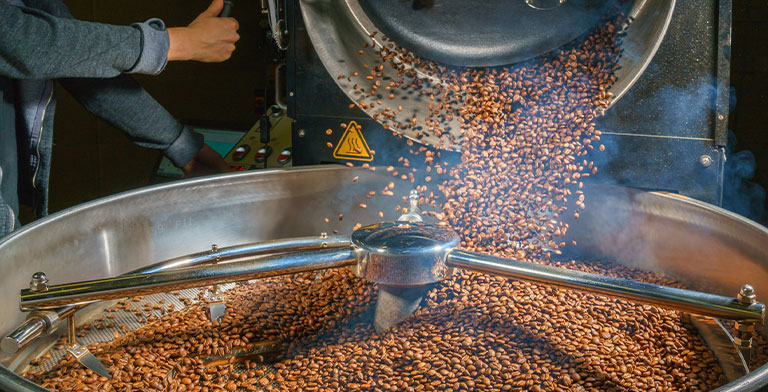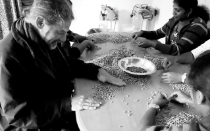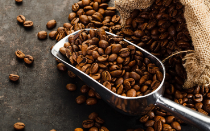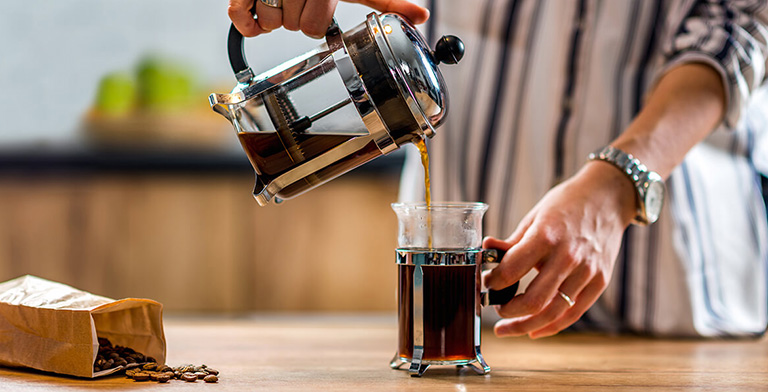
Where does your favourite cuppa come from?
If you ever wondered how coffee is cultivated and processed, you’ve come to the right place.
While millions of us begin our day with a steaming cup (or cups!) of freshly brewed coffee, the vast majority of us have never given much thought to the long road those beans travel to find their way to our cup.
What we know as coffee beans are actually the seeds from the fruit of the coffee plant. It’s here that the world’s coffee starts its fascinating journey! The coffee manufacturing process is largely dependent on a multitude of factors, including the variety of coffee and the final expected product.
Here is a look at coffee’s journey from crop to cup: how it’s grown, processed, and roasted.
Planting
As you already know, the coffee beans you drink are not fruits, but seeds. These seeds need to be dried, roasted and then ground to create the beverage we all drink and love. If these seeds remain unprocessed, they can be used to grow coffee plants. Typically, the seeds are placed in large shaded beds until they sprout, and then moved to individual pots with soil possessing a composition that supports optimal growth. Once they become sturdy enough, they are moved to a permanent location where they can enjoy unrestrained growth. Coffee trees are best planted during the rainy season to increase moisture and improve the establishment of roots.
Harvesting
The time it takes for a newly planted coffee tree to bear fruit depends on the type of coffee, and often takes anywhere from 3 to 4 years. Coffee fruit is commonly referred to as cherries, and can change colour depending on its level of ripeness. Unripe coffee cherries start with a green hue, and slowly transform into bright or dark red once fully ripe; and the process becomes fast-tracked under environments of lower altitudes and higher temperatures.
Similar to tea, coffee is often harvested by hand to ensure only the ripest cherries are picked. This is a labour-intensive process, and due to varying maturity periods, picking may have to occur three times in order to clear out entire cultivation. However, in nations such as Brazil, where coffee is a primary commodity with extensive cultivations spanning large flatlands, cherries are harvested via a machine.
Whether picking takes place manually or by machines, coffee is either harvested by one of two methods:
Harvesting Method #1: Strip picking
Here the cherries are completely stripped off the branch, including the unripe ones. This is mainly used in harvesting the more productive Robusta plants.
Harvesting Method #2: Selective picking
In this method, the red cherries are selected, while the green ones remain on the tree in order to ripen further. This harvesting system is carried out every 10 days, and due to its high labour requirement, is mainly adopted in harvesting the more high-end Arabica coffee variety.
Processing
Cherries are processed soon after harvest, in order to avoid them from being spoiled. There are three main methods used in processing these sought-after cherries, dependent on both location and the resources that are readily available.
The Dry Method
This is often referred to as ‘unwashed’ or natural processing and is in fact the ancient method of processing cherries, widely utilised in regions where water scarcity prevails. It is also found across small-scale farms.
In this process, freshly plucked cherries are spread over a vast surface and dried over the course of 15-20 days. Usually placed on drying beds which are slightly elevated from the ground to ensure greater exposure and circulation of air around the cherries. Frequent raking and turning occur in order to reduce the risk of fermentation and ensure uniform drying.
At night, these berries are covered to ensure they are not exposed to moisture from the air. The drying process of each batch can last up to several weeks, only ending when the outer layer of the picked cherries have dried up and appeared blackened and fragile. At this stage, the moisture content would ideally stand at less than 11%, and the dried nature enables easier removal of the outermost layer in order to access the seed which lies at its core.
The Wet Method
This method is relatively new and is so named for its use of water to move the coffee fruit and extract its beans. First the cherries are cleaned, following the removal of unripe and overripe cherries, just as in the previous method.
A pulping machine is then utilized to squeeze out the skin without damaging the beans. This is enabled by the hard, resilient nature of the coffee bean. In fact, the perfect berries can be identified through this process, since those with the pulp remaining are considered less ripe than their other counterparts.
These beans are then sorted by hand and used in the production of lower quality coffee. Coffee pulp leaves a sticky substance known as mucilage, which is dissolved over a period of 24 hours within larger tanks using suitable enzymes. This stage is essential in ensuring the flavour that was present at the beginning is retained by the beans.
Following the removal of mucilage, the beans are thoroughly washed to remove any remnants. The coffee beans are dried for a few days either in the sun or using a machine. The dry coffee beans, also known as parchment coffee, are then sorted into different grades and dispatched for further processing.
Wet Hulled Method
Wet hulled coffee is also known as semi-washed coffee. Here depulping machines extract the seeds from the berries. However, here the seeds are moved to plastic tanks, along with the mucilage which has now created a thick husk that covers the seeds. A process called hulling then removes these husks together with the parchment or dry flakes that surround the seeds. The seeds are then laid out for drying.
This method is often observed in Indonesia, as a humid climate can make drying a challenge. This particular process enables speed and efficiency, recording half the drying time of other methods. Wet hulled coffee is generally heavy-bodied due to the remaining mucilage, and also contains chocolatey, savoury notes, and is ideal for use in a blended roast.
The Honey Method
The honey method uses principles from both wet and dry methods, using water to remove most of the fruit, but retaining the sticky mucilage when drying the fruit out in the sun.
This enables a fine balance between the sweetness of the original fruit while maintaining the original properties of the coffee seed. It is often seen practised in Costa Rica, with certain subcategories being present, namely yellow, red, black, white and golden.
Coffee Milling
Coffee beans are processed as follows, prior to reaching the market.
Hulling
This involves removing the parchment skin from the dried coffee.
Polishing
This process is often skipped by millers, and involves the removal of any slivers of skin that may have remained after hulling. Such polished coffee beans are considered to be of a higher quality than those that do not undergo polishing, yet they barely differ in terms of content.
Grading
The beans are then sorted and graded based on their size and weight. Inconsistencies and flaws are identified, and manually removed – a laborious, meticulous process which can last for several hours. An alternative is to sort the beans pneumatically via an air jet, thereby separating the heavy beans from the lighter ones. Bean size is determined through a series of screens with holes of varying size, measured on a scale of one to ten.
Once the milling process is complete, only the finest beans that pass through inspection are packaged and dispatched for sale to the high-end markets. Lower quality beans are not always discarded, however, and are instead processed and sold at a lower level of quality and pricing.
Coffee Roasting
Unroasted coffee, or green coffee locks in the flavour. However by roasting these green coffee beans, they transform into the aromatic brown beans you find in your favourite coffee store. You can either choose from a light, medium or dark roast, factors that influence the flavour of the coffee that is consumed.
The beans are roasted at temperatures of approximately 550F, and the first crack occurs when the beans register an internal temperature of 400F. At this stage, known as the light roast, the beans double in size and turn light brown. Once they reach 440F, the second crack appears. This is the medium roast, where beans turn darker, and a fragrant oily substance known as caffeoyl is seen to emerge.
Dark roasts emerge after the second crack, consisting of charred beans with greater levels of moisture present on their surface. The colour can range from medium dark brown to a nearly black hue.
Roasting is a highly specialized skill, whose mastery requires years of training and experience. A good roaster should be familiar with beans, techniques and equipment, with the ability to accurately predict the internal temperature of individual beans through the power of observation alone.
Roasts take place in closer proximity to the final consumption stage, as their quality begins to drop following this stage. Home roasting is a practice that has been adopted to ensure quality is upheld, while coffee shops offer customers the option of roasting coffee within their premises.
Coffee grinding
The purpose of grinding coffee is to ensure that the coffee is full of flavour. Based on the type of coffee brewer used to grind the beans, the coffee becomes either coarsely or finely ground. The method of grinding is a deciding factor in how fast the beans release their flavour. This explains why espresso is finely ground and also why hand-made coffee using a filter is coarsely ground.
Packaging
Although it may seem unimportant, packaging plays a key role in the process of manufacturing coffee. Any exposure to air can result in the coffee transforming into a hard, unusable lump. This is most apparent in ground coffee, which can rapidly lose out on flavour once exposed to its surroundings. Therefore, coffee is frequently packed into airtight containers and resealed carefully when being preserved for future use.
Value in Every Sip
So, there you have it. As you can see, making the right cup of coffee involves a great deal of manual labour and expertise – which is why it is important to appreciate its true value with every sip.














